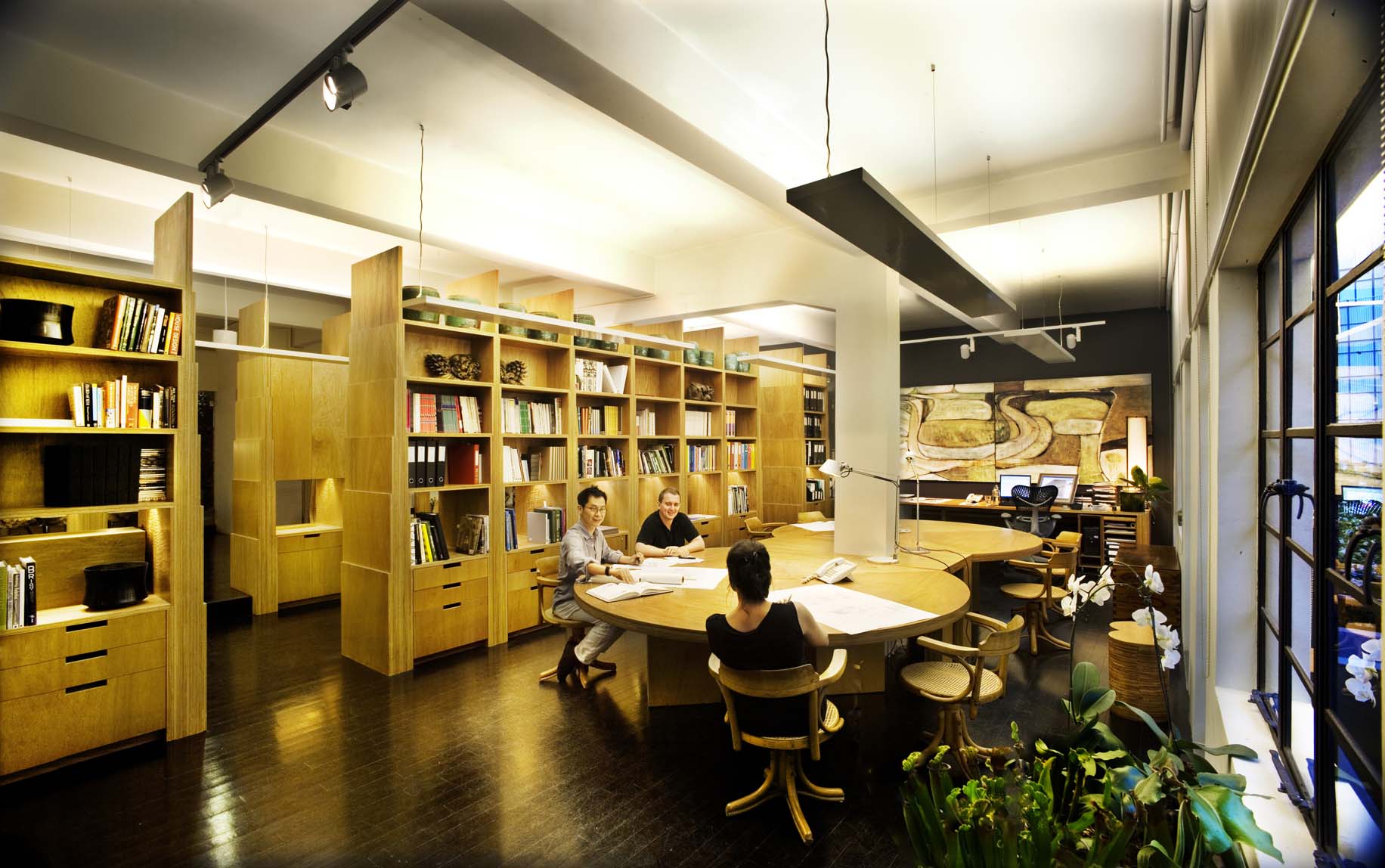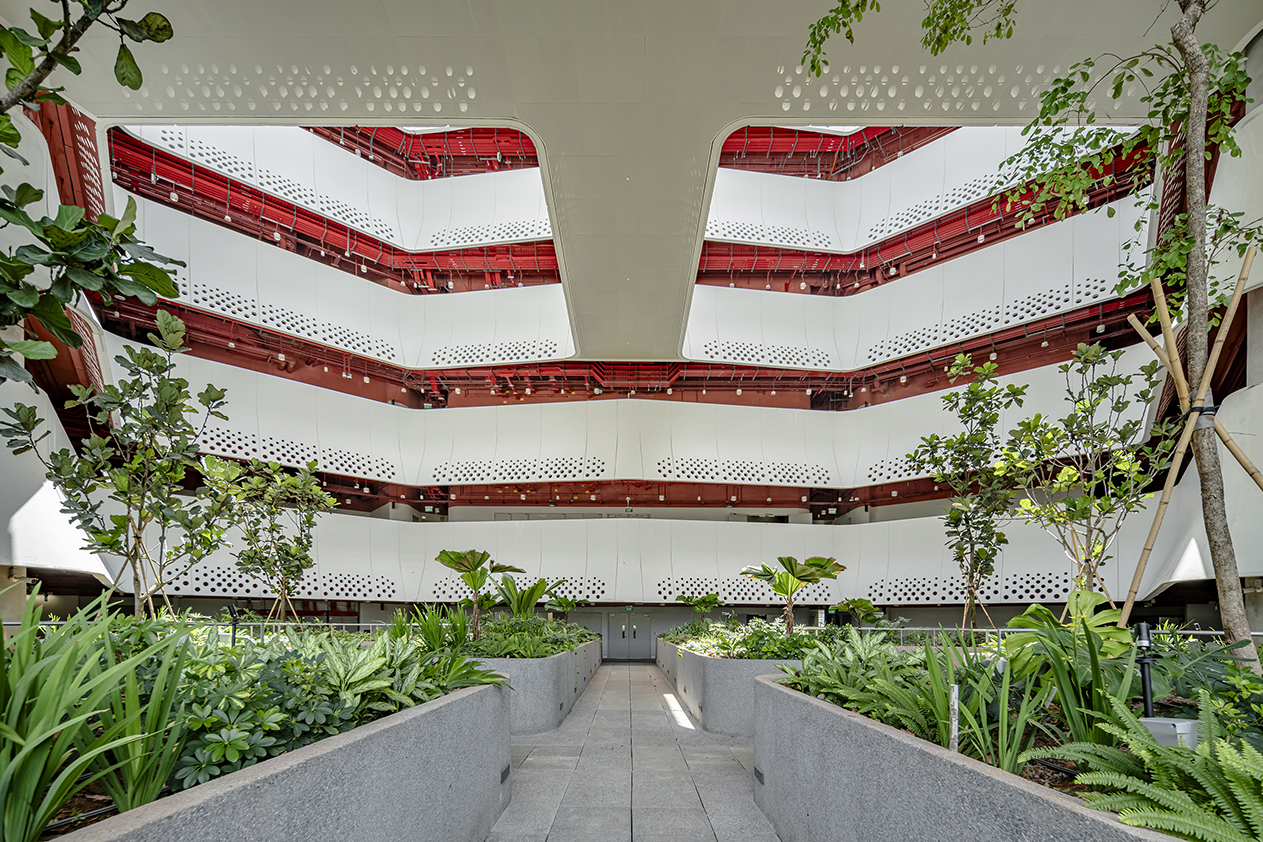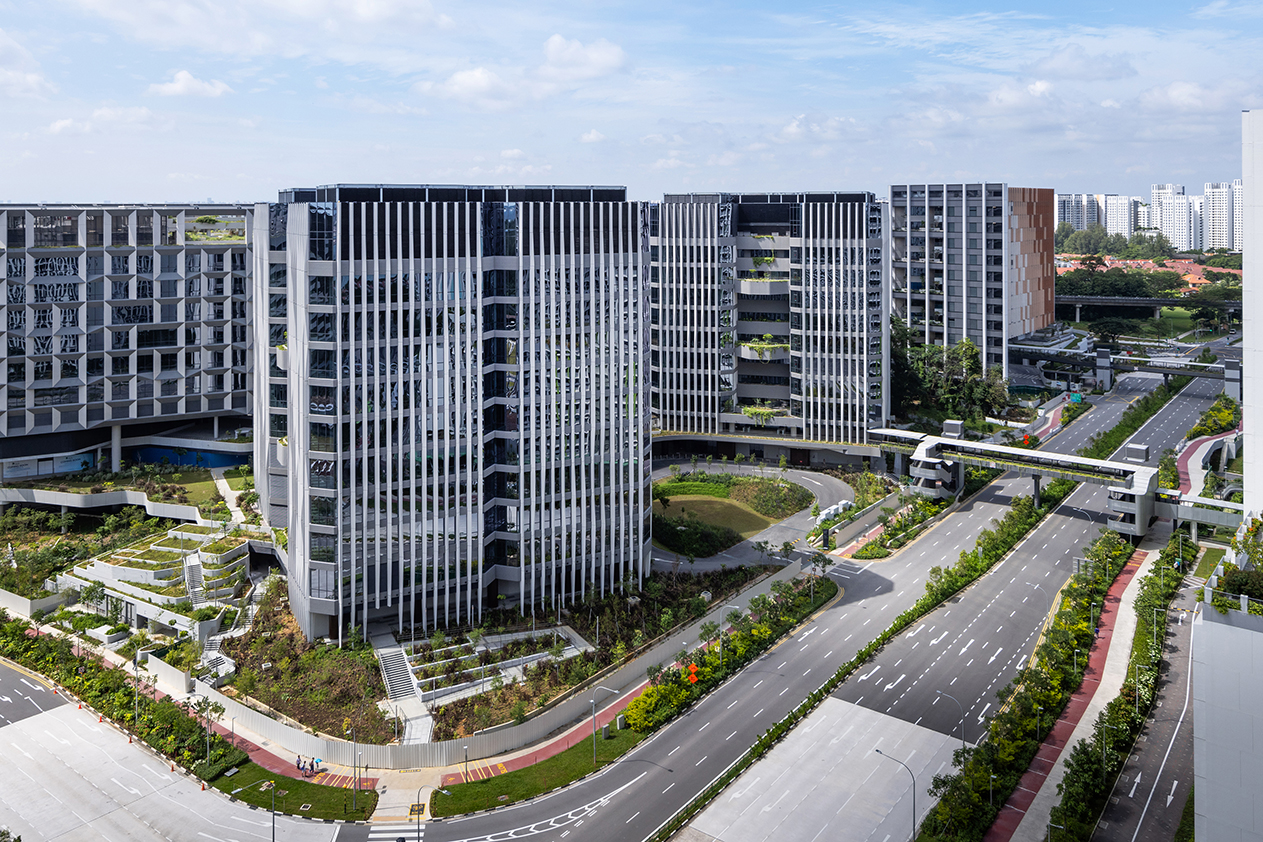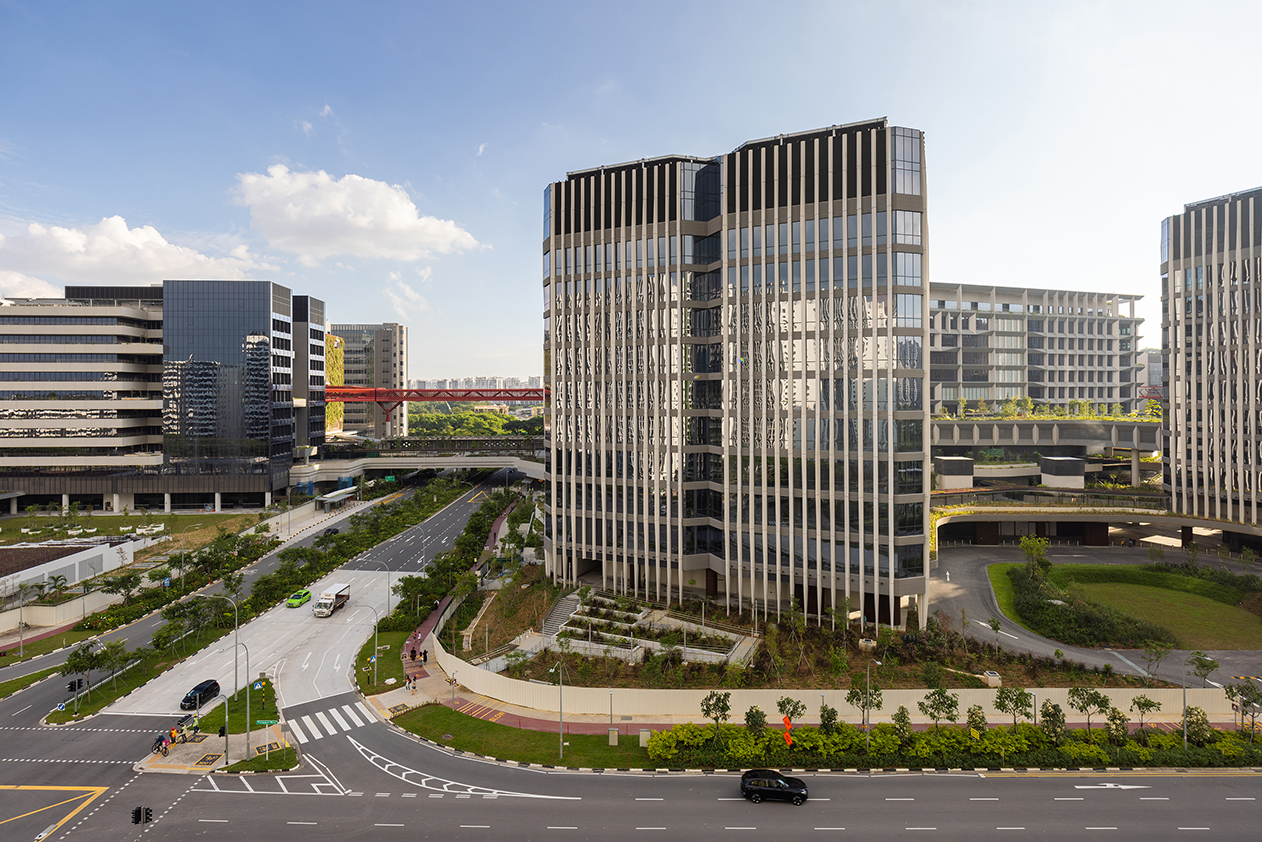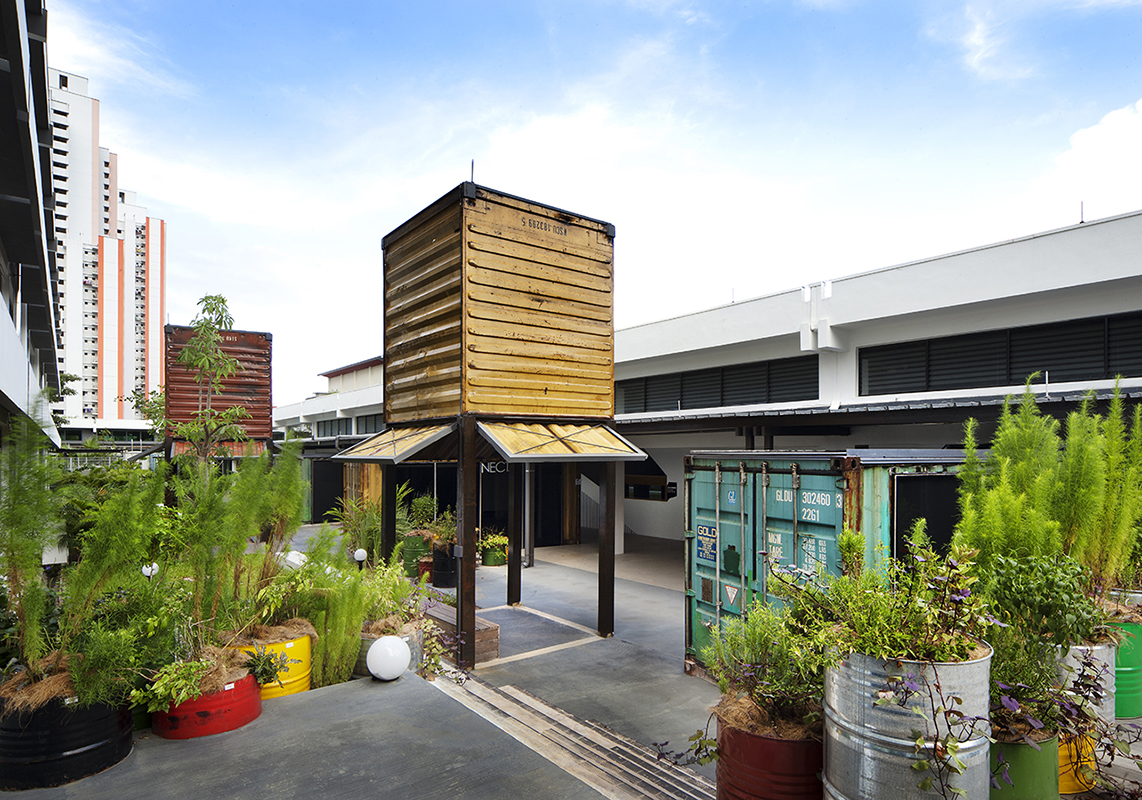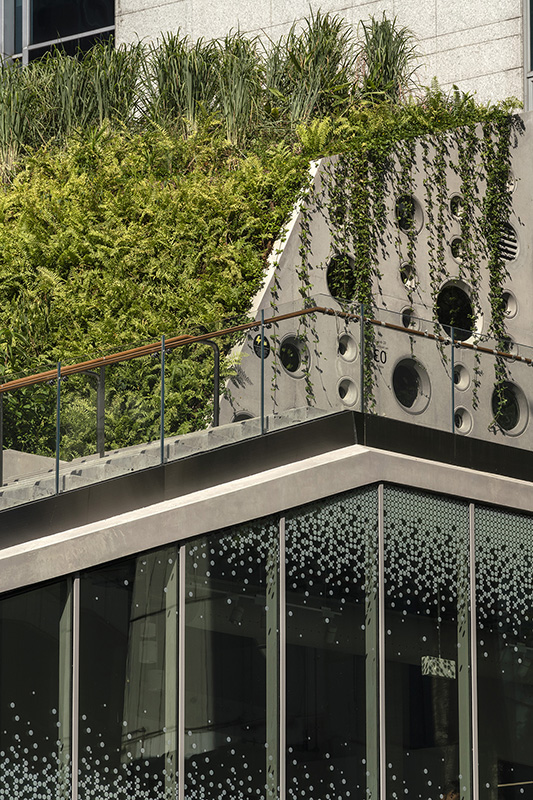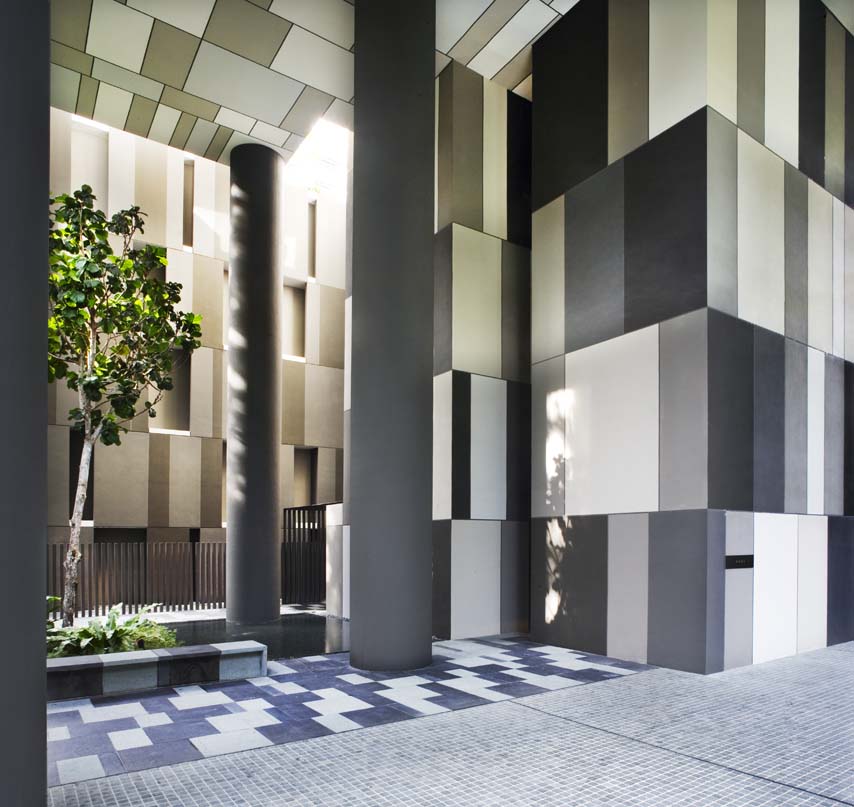29 HongKong Street
WOHA’s own office in Singapore is housed in a converted shophouse near to the river.
Two adjacent units of the traditional building typology were merged into one to house the office’s growing needs for space. Apart from the more traditional office elements like studios and meeting rooms, 29 HongKong Street also accommodates a gallery (WOHAGA), extensive roof terraces and a fully equipped kitchen and lounge.
While the front facade is protected by conservation guidelines, the more recent extension in the rear allowed more substantial changes. The top floor, previously cramped under a pitch roof, was converted into double-storey loft like space.
The traditional element of the shophouse courtyard was maintained for visual connection between the studios as well as cross ventilation. It also acts as an experimental ground for ongoing research and development of green wall systems.
In the extensive fit-out works on the building’s interior, furniture designs from the old office were developed further, transporting aspects of the familiar environment and its atmosphere to the new location.



